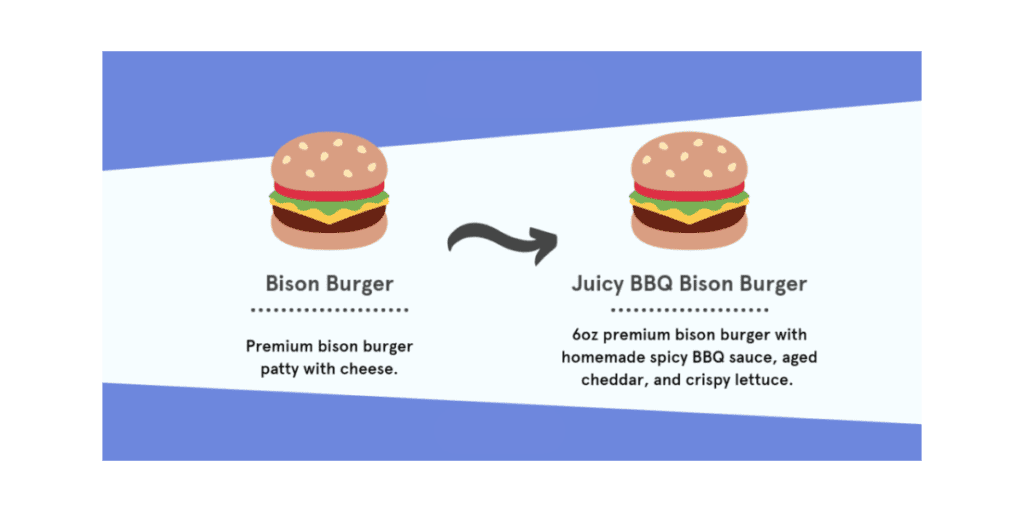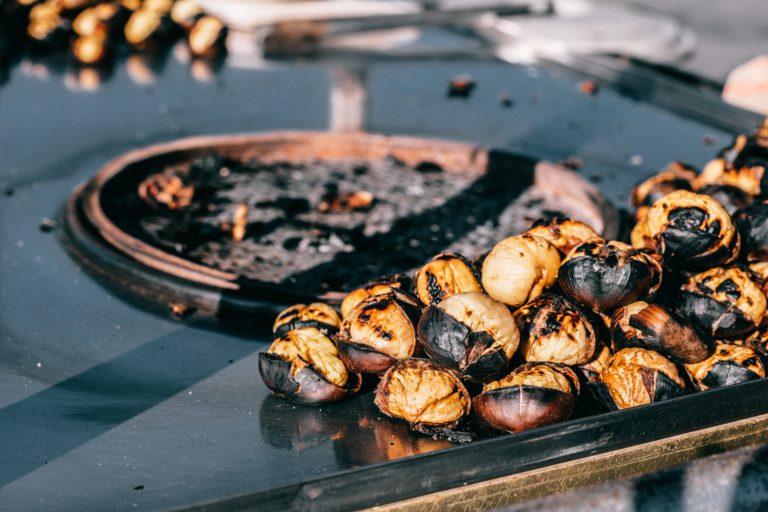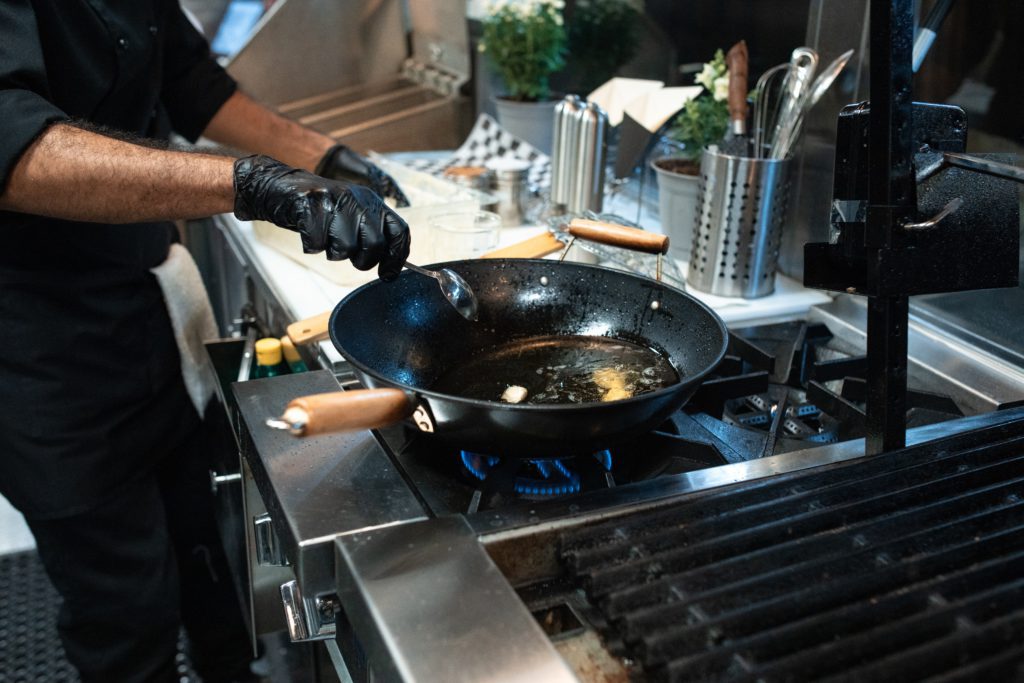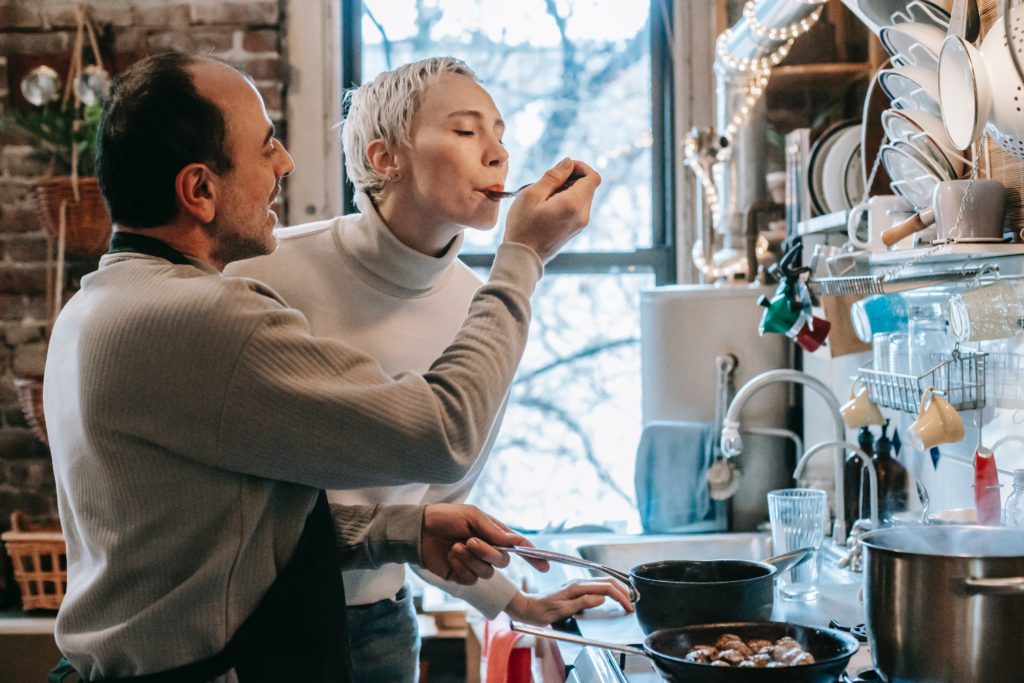Descriptive Words for Your Restaurant Menu
Your menu is more than a list of food – it’s your best marketing asset. Strong menu item descriptions can take a dish from being just a food item, to a feeling or something more. It can incite emotional responses, and help guide the diner through an experience. Great copywriting can distinguish your menu from competitors, can help justify pricing, and even drive revenue.
Here’s an example:
In one experiment, someone bought various small items, and asked 100 creative writers to invent stories about the items, which would then be posted on eBay. The cost of the goods totalled $128.74, and the items ended up selling for a net profit of $3,612.51.
The takeaway? People like stories, and it sparks an emotional connection to the item, beyond the food itself. They’re buying the dish, but they’re also buying the story and experience behind the dish.
Successful restaurants (and writers) do this by playing with the consumers imagination. The easiest way to make your menu more exciting, provoking or thoughtful, is to simply use adjectives in your item names and descriptions.
Menu Adjectives & Descriptive Words
That Drive Revenue

Texture

Airy: A light, pillowy texture often created by the incorporation of air.
Buttery: A smooth and creamy texture similar to that of butter.
Chewy: The texture of a food that needs to be chewed thoroughly before swallowing. Can be light and bouncy or heavy and sticky.
Creamy: A smooth and rich texture that usually comes from the incorporation of dairy.
Crispy: A light texture with a slight crunch.
Crumbly: The texture of food with a loose structure that falls apart into small pieces or crumbs.
Crunchy: A firm, crisp texture often identified by the sharp, audible noise that the food makes when being eaten.
Crusty: The texture of food with a hard outer layer and soft interior.
Delicate: A light, fine texture that may come apart easily.
Doughy: A soft and heavy texture that is often coupled with pale colouring.
Fizzy: A texture brought on by the presence of many small bubbles, usually referring to carbonated liquids.
Flaky: A light texture characterized by layers that come apart during eating.
Fluffy: A light and airy texture.
Gooey: A viscous, sometimes sticky texture arising from the presence of moisture in a dense solid food.
Juicy: A succulent, tender texture characterized by the presence of liquid in a solid food.
Silky: A fine, smooth texture characterized by a sleek f eel in the mouth.
Sticky: A texture characterized by gluiness in the mouth.
Smooth: A consistent texture free of grit, lumps, or indentations.
Succulent: A tender, juicy texture.
Tender: A soft texture that is easy to break down.
Velvety: A smooth and rich texture.
is Writing your menu taking too long?
Let our menu & copywriting experts provide free feedback and suggestions to bring your menu to the next level
Method of Preparation

Baked: A food that was cooked in an oven, often resulting in a crispy outer coating.
Blanched: A food that was scalded in boiling water and then moved to cold water to stop cooking. Results in a softened texture.
Blackened: A food that was dipped in butter and coated with spices before being cooked in a hot pan, resulting in a blackened appearance.
Braised: Food that is briefly fried in a small amount of fat and then is slowly stewed in a covered pot. Results in a seared, crispy exterior coupled with a tender interior texture.
Breaded: A food that was coated with a breadcrumb mixture or batter that is then baked or fried into a crispy outer layer.
Broiled: A food cooked with intense radiant heat, as in an oven or on a grill. Often results in a darkened appearance and crispy texture.
Caramelized: A food that has been cooked slowly until it is browned and becomes sweeter in taste.
Charred: Food that is grilled, roasted or broiled and gains a blackened exterior coupled with a smoky flavor.
Fried: Food that is cooked by submerging partially or fully into hot oil. Often results in a crispy or crunchy texture and golden color.
Glazed: A food that becomes moistened by having a flavorful coating dripped or brushed onto its surface.
Infused: A food that has been steeped in liquid with another ingredient in order to extract the flavor of the ingredient.
Poached: Food that has been cooked in nearly boiling liquid. Often results in a tender, moist texture.
Roasted: Food that has been cooked with dry heat in an oven or over a fire. Often results in a browned exterior and crisp coating.
Sauteed: A food that has been cooked quickly in a small amount of fat.
Seared: A food that is cooked in a small amount of fat until caramelized and then finished by roasting, grilling, or another method. Results in a crisp outer texture and tender interior.
Smoked: Food that is cooked or preserved by long exposure to smoke from smoldering wood. Results in a distinctive, bold flavor.
Whipped: Food that has been beaten to incorporate air. Often results in a light texture.
Taste

Acidic: A food with a sharp taste. Often used to refer to tart or sour foods as well.
Bitter: A tart, sharp, and sometimes harsh flavor.
Bittersweet: A less harsh taste than bitterness. Couples tartness with sweetness.
Briny: Another word for salty.
Citrusy: A bright flavor like that of lemons, limes, oranges, and other citrus fruits.
Cooling: A taste that mimics the feeling of cold temperature. Often used to describe mint.
Earthy: Reminiscent of fresh soil. Often used to describe red wines, root vegetables, and mushrooms.
Fiery: A taste that feels as though it gives off heat. Another word for spicy.
Fresh: A light and crisp taste. Often used to describe produce or herbs.
Fruity: Any taste reminiscent of sweet fruit flavours.
Full-bodied: Rich flavour that can feel heavy in the mouth. Often used to describe wines.
Herbal: A bright, fresh, or sometimes earthy taste created by the incorporation of herbs.
Honeyed: A sweet or candied taste that may be reminiscent of honey.
Nutty: Any taste similar to the flavours of nuts. Often used to describe cheeses.
Rich: A full, heavy flavour. Often used to describe foods containing cream.
Robust: A rich taste with some earthiness. Often used to describe wines or aged liquors.
Sharp: A harsh, bitter, or tart taste. Often used to describe acidic foods.
Smoky: A taste reminiscent of the smell of smoke.
Sour: A biting, tangy, tart flavour.
Spicy: A burning taste from hot spices.
Sweet: A sugary flavour.
Tangy: A tart, biting taste that feels tingly in the mouth.
Tart: A sharp, bitter, or sour flavour. Often used to describe acidic foods.
Yeasty: An earthy taste reminiscent of yeast. Often used to describe beer and breads.
Woody: An earthy, sometimes nutty taste. Often used to describe coffees or cheeses.
Zesty: A fresh, vivid, or invigorating flavour.
Negative vs. Positive Words
Dry vs. crispy: Chicken with a dry breading compared to Chicken with a crispy breading
Greasy vs. velvety: Pasta in a greasy sauce compared to Pasta in a velvety sauce
Sugary vs. honeyed: Pears with a sugary drizzle compared to Pears with a honeyed drizzle
Burned vs. blackened: Burned salmon compared to Blackened salmon
Tough vs. hearty: A piece of tough bread compared to A piece of hearty bread
Mushy vs. tender: A mushy crabcake compared to A tender crabcake
Well, we hope this post helps you out as you build out new menus for your restaurant. If you found this helpful, consider checking out our other product! OrderUp offers some pretty sweet restaurant technology that already helps over 50 restaurants, food halls & other venues operate profitably and efficiently with our dynamic point of sale, free online ordering and hybrid QR code ordering.
Cheers,
The OrderUp Team
Book a Free Menu Consultation
- We have built and optimized thousands of menus.
- Whether you’re interested in an OrderUp menu or not, we’re more than happy to lend a hand for free
- Book your free consultation today!

